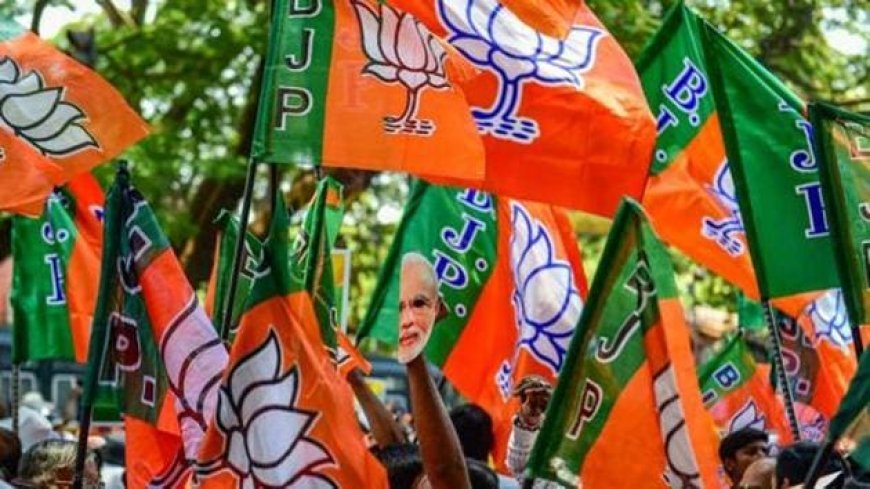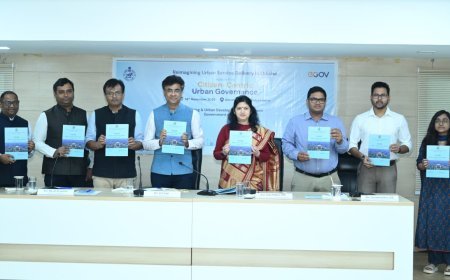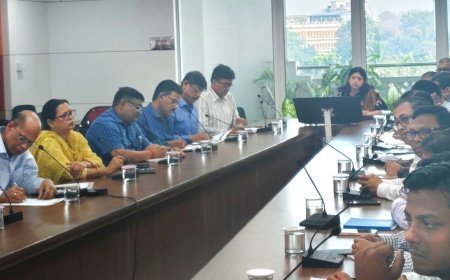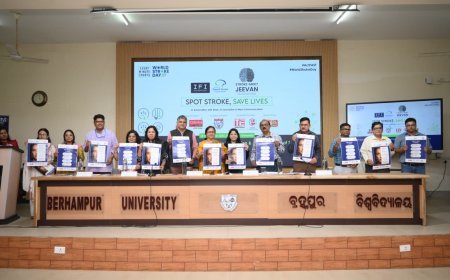“Saffron Sweeps the Spectrum as BJP Paints a Miracle Victory.”

Editorial for The Common Times
By Executive Editor: Satyabrata Jena
A Verdict That Redraws the Map — Bihar’s Mandate and the Signal from Nuapada
The 2025 Bihar Assembly election has delivered a clear, emphatic and consequential verdict — one that not only redefines Bihar’s political balance, but also sends ripples across India’s eastern electoral landscape. The sweeping victory of the National Democratic Alliance (NDA), led by Chief Minister Nitish Kumar and the Bharatiya Janata Party (BJP), marks a renewed consolidation of power, while exposing the profound weaknesses of the Rashtriya Janata Dal (RJD)–Congress alliance. At the same time, the Nuapada by-election in Odisha serves as a parallel indicator of shifting political undercurrents in the region. Together, the two results paint a picture of a political moment where organisational strength, narrative discipline and ground-level credibility have decisively outperformed nostalgia-driven alliances and fragmented opposition strategies.
The NDA’s Commanding Performance in Bihar
The results in Bihar speak with unmistakable clarity. The NDA crossed the majority mark with comfort, with the JD(U) and BJP together reclaiming ground lost in the previous term. Nitish Kumar, whose long presence in Bihar’s political consciousness once again proved decisive, has managed to convert his governance identity into electoral trust. The BJP, for its part, demonstrated decisive efficiency in mobilisation, cadre coordination and booth-level execution.
The alliance’s messaging — focused on stability, development, women’s employment schemes, infrastructure expansion and public order — resonated across caste and community segments. The NDA succeeded where the opposition faltered: it built a narrative that was forward-looking, deliverable and relatable to first-time voters and urban–rural segments alike.
Analysts have noted that this election shows a widening of the NDA’s support beyond traditional vote banks. Constituencies that once leaned heavily towards the opposition, including pockets with strong minority presence, witnessed competitive NDA penetration. This is not merely a political gain — it is a structural shift in Bihar’s electoral coalitions, and one that will shape policy expectations in the years ahead.
The RJD–Congress Alliance: Promise Without Projection
On the opposite side, the RJD–Congress combine entered the electoral arena with rhetorical confidence but without the necessary strategic coherence. The RJD’s attempt to project Tejashwi Yadav as the face of a generational transition encountered the limits of a narrow social coalition. Traditional Yadav–Muslim support could not compensate for the alliance’s failure to expand its reach into the EBCs, Dalit groups, migrant communities and the swelling youth population searching for pragmatic governance.
Seat-sharing conflicts, mixed messaging, and over-dependence on past emotional appeal contributed to a fragmented campaign. The Congress, in particular, suffered one of its weakest performances in the state, signalling the need for an urgent structural rebuilding of its Bihar unit. The opposition’s inability to match the NDA’s organisational strength, digital campaign readiness, booth-level presence and narrative clarity stands out starkly in this election.
The lesson is unmistakable: alliances built on arithmetic alone cannot defeat alliances built on execution, strategy and ground trust.
What the Verdict Means for Bihar’s Future
Nitish Kumar is now poised to return as Chief Minister, but the mandate is not simply an endorsement — it is an expectation. With an overwhelmingly pro-NDA verdict comes a responsibility to deliver on job creation, industrial investment, law-and-order stability, infrastructure expansion and equitable growth. Bihar’s electorate — particularly its youth — has sent a message that performative politics will not suffice. The state needs transformation rooted in administrative efficiency and long-term vision.
At the same time, the JD(U)–BJP dynamics will determine how smoothly the next five years unfold. With the BJP gaining additional ground and organisational leverage, the power equation within the alliance will evolve, demanding deft political management and mutual accommodation.

Nuapada, Odisha — A By-Election with Big Implications
Parallel to Bihar’s grand mandate, the Nuapada by-poll in Odisha delivered a result with significant regional meaning. The BJP’s Jay Dholakia secured a decisive lead, defeating the Biju Janata Dal (BJD) and Congress candidates with a margin that signals more than a mere by-poll shift. Nuapada revealed deeper fractures within the BJD’s grassroots machinery — allegations of internal sabotage, pre-poll defections and cadre indiscipline have raised serious questions about the party’s organisational coherence.
For Odisha politics, the Nuapada result is a warning that complacency in long-held strongholds can no longer be politically affordable. The BJP’s expansion, marked by aggressive cadre deployment and strategic micro-management, demonstrates that even regions with strong regional party legacies are now competitive battlegrounds.
Nuapada, though a single seat, mirrors what Bihar’s larger result represents — disciplined structure defeating scattered sentiment, and political agility overtaking legacy-driven assumptions.
A Larger Message for Indian Politics
When viewed together, Bihar and Nuapada point to a national pattern:
The electorate is rewarding organisational clarity, governance-linked narratives and delivery-oriented politics.Opposition alliances that lack ground coherence and rely heavily on arithmetic symbolism are failing to convert sentiment into seats.
Regional parties must undergo internal renewal if they intend to remain competitive in the new political climate. For the NDA, these victories reinforce momentum. For the opposition, they mark a clear call for introspection, structural reform and grassroots rebuilding.
The 2025 Bihar mandate is more than a political victory — it is a reaffirmation of disciplined governance and strategic coalition-building. The RJD–Congress combine must now rebuild from the ground up, with a renewed understanding of voter aspirations. And the Nuapada by-poll stands as a reminder that no seat is safe, no cadre is permanent, and no party can afford to ignore the rising demand for credible, delivery-based politics.
As the political tide of 2025 unfolds, one truth remains clear: the voter is firmly in command. And Bihar has once again shown the nation that clarity of purpose, organisational strength and credible governance shape the destiny of democracy.
— Satyabrata Jena,
Executive Editor, The Common Times













































